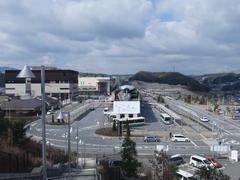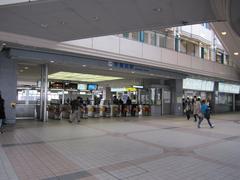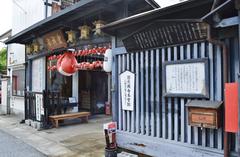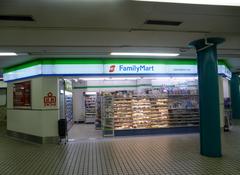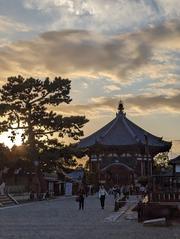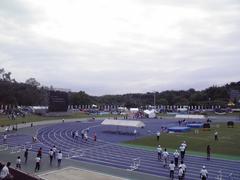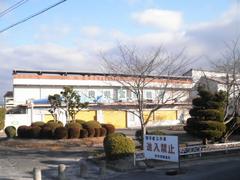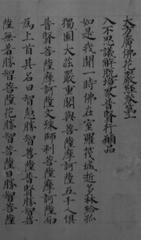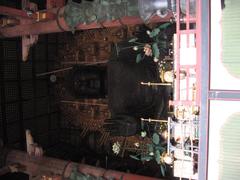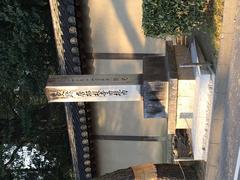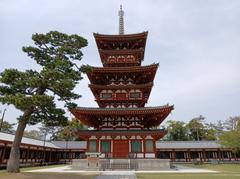Hari Interchange Nara: Visiting Hours, Tickets, and Historical Significance
Date: 04/07/2025
Introduction
Hari Interchange (針インターチェンジ, Hari IC), located in the northeastern corner of Nara Prefecture, is more than a major transportation hub—it is a vibrant cultural gateway to the region’s rich heritage and natural wonders. At the junction of the Meihan National Highway (National Route 25) and Nara Prefectural Route 80, this modern interchange connects travelers from Osaka, Kyoto, and Nagoya with Nara’s historic core and scenic highlands. Evolving from ancient pathways dating back to Nara’s time as Japan’s first permanent capital (710–794 CE), Hari Interchange today is a seamless blend of historical significance and modern convenience.
Central to the interchange’s appeal is Hari Terrace (針テラス), a distinctive roadside station featuring southern Italian-inspired architecture, renowned Japanese hospitality, and a suite of amenities: hot spring onsen, diverse dining, local produce markets, pet-friendly areas, and event spaces. Its universal accessibility features, eco-friendly facilities, and proximity to iconic sites such as Tōdai-ji Temple, Kasuga Taisha Shrine, and Nara Park make Hari Interchange an ideal starting point for exploring Nara’s cultural and natural treasures.
This comprehensive guide provides essential information on Hari Interchange visiting hours, ticket policies, facilities, nearby attractions, and practical travel tips. For the latest updates, consult official resources such as Visit Nara and MATCHA.
Table of Contents
- Introduction
- Historical Context and Development
- Visiting Hours and Ticket Information
- Transportation and Accessibility
- Facilities and Amenities
- Exploring Nara Historical Sites Nearby
- Special Events and Guided Tours
- Environmental and Cultural Preservation
- Visitor Tips
- Frequently Asked Questions (FAQ)
- Visuals and Maps
- Integration with Regional Development
- Conclusion
- References
Historical Context and Development
The Hari Interchange area has long served as a strategic crossroad, linking Nara to neighboring regions such as Osaka, Kyoto, and Mie. Its transformation from ancient footpaths to a state-of-the-art interchange is rooted in Nara’s role as Japan’s first permanent capital and a center of culture and commerce. Today, Hari Interchange, situated along National Route 25, is a vital entry point for both domestic and international travelers, facilitating access to Nara’s historic and natural sites.
Visiting Hours and Ticket Information
Hari Interchange and Roadside Station Hours
- Interchange: Open 24 hours a day, with free public access.
- Hari Terrace (Roadside Station): Generally open from 9:00 AM to 7:00 PM (some restaurants until 8:00 PM; onsen from 10:00 AM to 9:00 PM). Hours may vary seasonally or during holidays; check official sources for updates.
Ticket Policies
- Hari Interchange and Hari Terrace: No entrance fee or parking fee.
- Onsen and Special Events: Tickets required for the onsen (typically around ¥800 for adults) and for certain special events or guided tours. Purchase tickets at the venue or in advance online.
- Nearby Attractions: Admission fees apply for sites like Tōdai-ji Temple and major museums; tickets can be purchased at each location or through official online platforms.
Transportation and Accessibility
By Car
Hari Interchange is most easily accessed by private vehicle, connecting directly to key expressways and arterial roads. Ample free parking is available for over 400 vehicles, including spaces for buses, motorcycles, and accessible vehicles.
By Public Transportation
- Bus: Local and long-distance buses run from Nara, Tenri, Sakurai, and Nabari to Hari Interchange. Frequency is every 30–60 minutes during the day; less frequent in the evening and on weekends.
- Rail: The nearest train stations (Kintetsu Nara Station, JR Nara Station) are a 20–30 minute drive away; buses and taxis provide onward connections.
- Accessibility: Hari Terrace is equipped with universal design features—ramps, elevators, tactile paving, accessible restrooms, and multilingual support (Japanese, English, Chinese, Korean).
Facilities and Amenities
Hari Terrace provides a comprehensive range of services:
- Dining: Restaurants offering local specialties like Yamato beef, handmade soba, kakinoha-zushi, and seasonal tempura. Food court and vending machines are also available.
- Shopping: Markets selling fresh regional produce, souvenirs, local sake, and crafts.
- Hot Spring Onsen: Indoor and outdoor baths, open daily.
- Rest Facilities: Clean restrooms, nursing and baby-changing rooms, free Wi-Fi, charging stations, and coin lockers.
- Pet-Friendly Amenities: Dog run, pet relief area, water bowls.
- EV Charging & Fuel: Electric vehicle charging stations and a 24-hour gas station.
- Tourist Information: Multilingual staff, printed maps, digital kiosks, and real-time travel advisories.
- Event Spaces: Venues for festivals, craft fairs, and live performances.
- Safety: Security cameras, patrols, AEDs, first aid kits, and emergency call buttons.
Exploring Nara Historical Sites Nearby
Hari Interchange is a perfect base for visiting:
- Nara Park & Tōdai-ji Temple: See the Great Buddha and free-roaming deer (30–40 minutes by car or bus).
- Kasuga Taisha Shrine: Famed for its lanterns and UNESCO World Heritage status.
- Naramachi Historic District: Traditional merchant houses and museums.
- Yoshino: Renowned for cherry blossoms and autumn foliage (60–75 minutes by car).
- Dorogawa Onsen: Mountain hot spring village, ideal for hiking and relaxation.
Tourist information desks at Hari Terrace can assist with itineraries and ticket purchases for these sites.
Special Events and Guided Tours
Hari Terrace hosts year-round events, including:
- Local Produce Markets: Featuring regional fruits, vegetables, and specialty foods.
- Festivals & Performances: Seasonal celebrations, fireworks, traditional dance, and live music.
- Workshops & Tastings: Craft, culinary, and agricultural experiences.
- Guided Tours: Organized by the Yamazoe Tourism Association, covering hidden temples, scenic trails, and folklore sites. Some tours require advance booking and a fee.
Environmental and Cultural Preservation
Committed to sustainable tourism, Hari Interchange features:
- Eco-Friendly Facilities: Energy-efficient lighting, recycling, water-saving fixtures, and EV charging.
- Support for Local Producers: Markets and restaurants highlight regional agriculture.
- Preservation of Rural Character: Maintaining a balance between modern convenience and traditional landscape.
Visitor Tips
- Visit Hari Terrace during operating hours (9:00 AM–7:00 PM) for full access to amenities.
- Check bus schedules if using public transport, as service is infrequent outside peak hours.
- Join a guided tour for an in-depth cultural experience.
- Opt for local specialties in the food court and markets.
- Bring a camera—cherry blossom and autumn foliage seasons are particularly photogenic.
- Follow posted guidelines for environmental conservation and responsible tourism.
Frequently Asked Questions (FAQ)
Q: Are there entrance fees for Hari Interchange or Hari Terrace?
A: No, both are free to access; only certain facilities like the onsen require tickets.
Q: Is parking available?
A: Yes, free parking for over 400 vehicles.
Q: Are pets allowed?
A: Pets are welcome in outdoor areas, with dog runs and amenities provided.
Q: How do I reach Hari Interchange from Nara or Osaka?
A: By car (60–90 minutes from Osaka/Nagoya); buses connect to Nara city and other towns.
Q: Are facilities accessible for people with disabilities?
A: Yes, universal design features are implemented throughout.
Q: Can I buy tickets for Nara’s historical sites at Hari Terrace?
A: Tourist information counters can assist with information and some ticket purchases.
Visuals and Maps
Alt tags should include keywords such as “Hari Interchange visiting hours,” “Hari Terrace tickets,” and “Nara historical sites.”
Integration with Regional Development
Hari Interchange is a model for integrating modern infrastructure with sustainable rural development. By connecting major cities to Nara’s countryside, supporting local producers, and promoting cultural events, it plays a pivotal role in community vitality, economic growth, and heritage preservation.
Conclusion
Hari Interchange and Hari Terrace are more than transit points—they are vibrant destinations that provide comfort, regional flavors, cultural immersion, and access to Nara’s world-renowned historical sites. Whether you are stopping for a meal, planning a day trip, or embarking on a multi-day journey, Hari Interchange enriches every traveler’s experience with authentic local hospitality and practical convenience.
Stay updated on visiting hours, events, and travel tips by downloading the Audiala app, exploring related guides on Nara’s historical sites, and following official tourism channels. For the most accurate information, consult:
Internal Links
- [Exploring Nara Historical Sites: A Traveler’s Guide]
- [Top Rural Destinations in Japan]
- [Sustainable Tourism in Nara Prefecture]
References
- Hari Interchange Nara: Visiting Hours, Tickets, and Exploring Nara Historical Sites, 2025, Yamazoe Tourism Association (Visit Nara)
- Facilities, Features, and Visitor Experience at Hari Interchange: A Comprehensive Guide for Travelers to Nara, 2025, Nara Prefecture Tourism Board (MATCHA)
- Cultural and Regional Significance, 2025, Nara City Guide (naracity-guide.com)
- Hari Interchange: Your Gateway to Nara’s Historical Sites and Visitor Information, 2025, Nara Visitor Center & Inn (Visit Nara)
